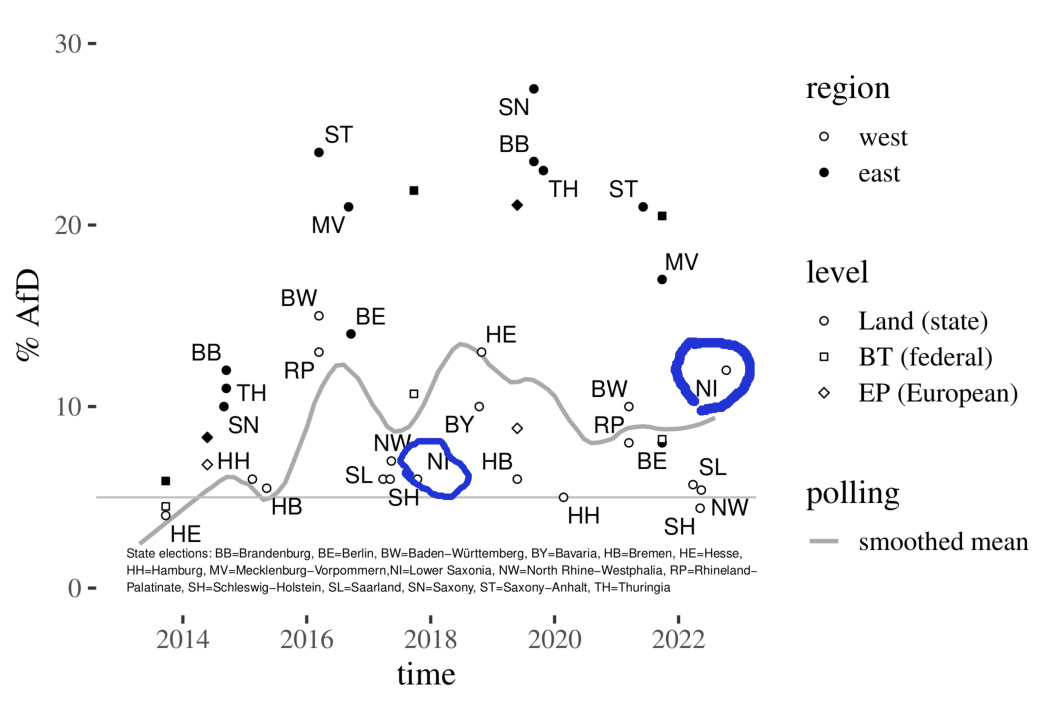Lower Saxony just held the last of 2022’s four state elections. The result is mostly in line with the pre-election surveys: both the SPD and the CDU (which in this state formed the last remaining Grand coalition) lost a few points, but the SPD remained stronger overall and is perceived as the winner. The Left stood no chance, and the FDP may or may not have made it past the threshold. The Greens nearly (but not quite) doubled their result, and so did the AfD (compare the two artisanal blue circles in the graph).
To put this into perspective, the levels of infighting in the state party are spectacular even by AfD standards. In 2017, the party nearly failed to submit a slate of candidates and managed to get the prosecution service involved in their altercations with the authorities and amongst each others. The AfD eventually scraped past the threshold, but the party executive collapsed on election night. Subsequently, warring factions tried to organise separate party conferences in different locations. In the end, the federal leadership stepped in and appointed an acting state party executive, which unsurprisingly found (amongst other things) that money was missing from the bank. In 2020, three of the state MPs including the 2017 frontrunner candidate left the parliamentary party, which was subsequently dissolved. The 2021 and 2022 party conferences ended prematurely and in disarray.

And yet, the AfD just managed to get their best result in any western state since 2018 (compare this to the lousy results in North Rhine-Westphalia, Saarland, and Schleswig-Holstein earlier this year). Even if the AfD in Lower Saxony has managed to set their house in order, this is unlikely to be the result of better discipline and stronger candidates alone. It rather points to some kind of recovery in national support that follows a long period of decline and stagnation, which set in even before Covid.
Grievances do not simply translate into far-right support – it’s usually a bit more nuanced than that. And yet, a vote share of 11 per cent in Lower Saxony suggests that the AfD must be benefitting from renewed worries about migration triggered by the war, alongside the new-ish worries about the war itself, about energy security, and about inflation. Whether this is temporary or whether the party will do well in the next round of western state elections (Bremen in May and Bavaria and Hesse later in 2023) remains to be seen.
Discover more from kai arzheimer
Subscribe to get the latest posts sent to your email.


Likes
Reposts
Mentions